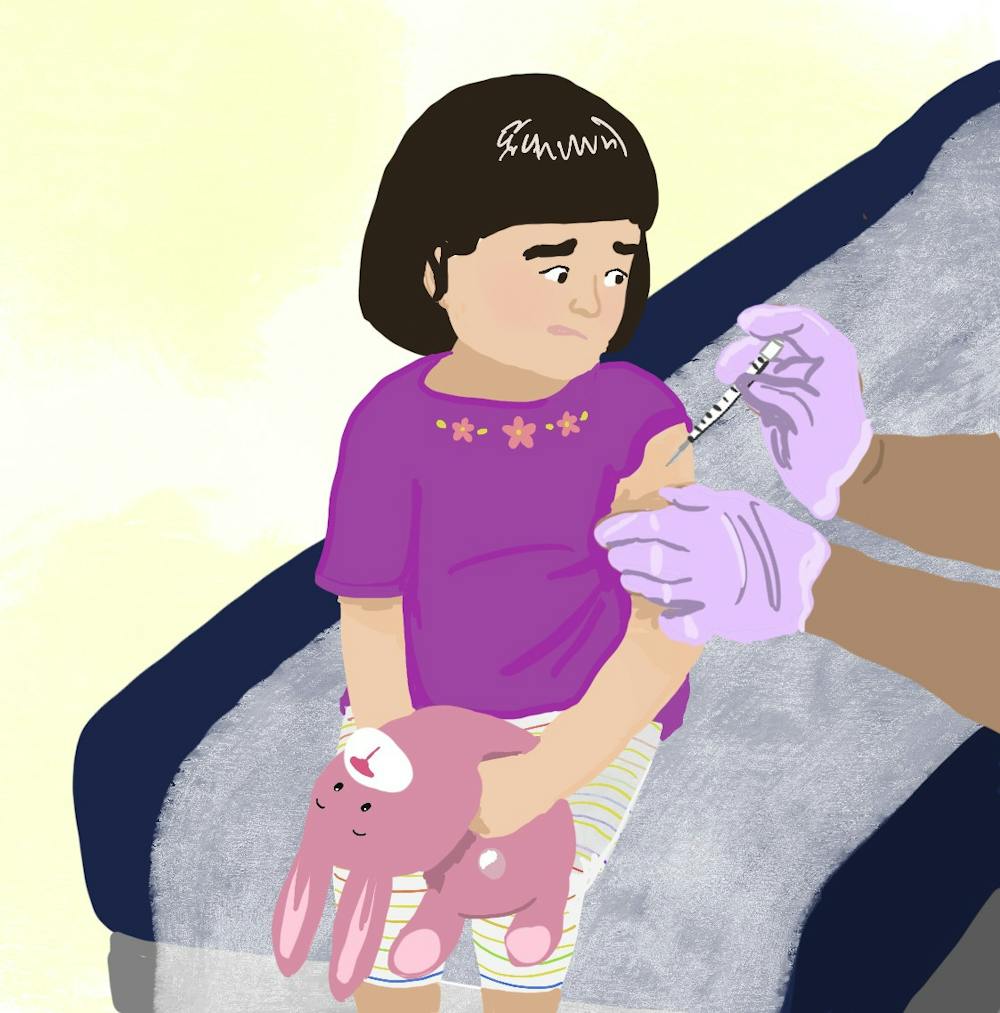On Oct. 12 the Centers for Disease Control and Prevention expanded its recommendation for the updated bivalent COVID-19 vaccine booster to include children ages five through 11, according to a CDC press release.
The updated vaccines include Omicron BA.4 and BA.5 spike proteins, which target Omicron variants that are immune-evading and more transmissible, according to the announcement.
The recommendation follows an authorization from the Food and Drug Administration, allowing the Pfizer-BioNTech vaccine for children ages five through 11 and the Moderna vaccine for children and adolescents ages six through 17, according to the release.
Following the CDC announcement, the Rhode Island Department of Health updated its guidelines to include bivalent booster shots for anyone five years and up.
The shots are available at pharmacies and through primary care providers, according to Philip Chan, consultant medical director for RIDOH, associate professor of medicine and associate professor of behavioral and social sciences. “There’s ample supply and good access, and people just need to sign up and do it,” Chan said.
In Rhode Island and nationwide, the share of children who have received both the primary vaccination series and additional booster shots is much lower than older age groups. In Rhode Island, 58.8% of children five through 17 have completed the primary vaccination series compared to a range of 68% (ages 19 through 24) to 95% (ages 60 through 79).
For booster shots, the difference is even more stark: Only 17% of children ages five through 17 have received at least one booster shot. Other age group booster uptakes range from 31% (ages 25 through 29) to 91% (ages 70 through 79).
The reasons for the differences in COVID-19 vaccine uptake among children and adults vary, said Amy Nunn, professor of behavioral and social sciences and professor of medicine.
“Even among people who got vaccinated, a lot of them were vaccine-hesitant for their children,” Nunn said.
Additionally, each COVID-19 vaccine was approved for children and adolescents later than for adults, meaning people may have been experiencing greater levels of COVID fatigue by the time they had the option to vaccinate their children, Nunn said.
“I think a lot of people had already had COVID and so they just got busy and got over COVID and just didn’t do it,” Nunn said.
Chan also noted that when it comes to vaccinating children and adolescents, parents may be “concerned less about COVID and more about some of the long term or other side effects of vaccines” due to a perception that the virus is less severe among children.
Although the COVID-19 virus has been less severe for children and adolescents than for other age groups, “it is not benign,” Chan said. “Kids can get really sick with it, there have certainly been a handful of kids who have been hospitalized and more than a handful across the U.S. who have died from it. And there’s also some longer term complications, like multi-inflammatory syndrome in children and long COVID.”
Chan stressed the safety of COVID-19 vaccines. “This vaccine has now been given to hundreds of millions of people across the world and here in the U.S. And there's a really great safety profile with it,” he said. “There's a small risk in younger adolescents for myocarditis, but that's very rare, and otherwise the vaccines are really safe and effective.”
There isn’t as much data yet on the bivalent booster shot, Chan said. “For the exact bivalent booster, there is still limited data for everyone because the decision was made, which I support, that we wanted to get this vaccine authorized and in use now, because the variants are here and they're affecting people.”
Nunn and Chan agree that the best methods of managing COVID-19 and getting people vaccinated have shifted. “Now that we know that COVID is going to (continue to) be with us, we have to integrate it into our healthcare systems,” Nunn said. “People are tired of COVID-specific messaging.”
This corresponds with the availability of funding, Chan said. “We are losing and have lost some of the COVID funding that’s coming into our state. What this means here in Rhode Island and other states is we haven’t been able to sponsor as many vaccine clinics.”
“This is a natural evolution of pandemics,” Chan added, in reference to the diminishing number of state-sponsored clinics. “A lot of what we're seeing now in terms of vaccines is being pushed back into the clinical community, which should be able to do this anyway.”
“The more we can normalize it and integrate it into primary care the better,” Nunn said, “because what we had for the first two years was really an emergency response and was unsustainable.”





